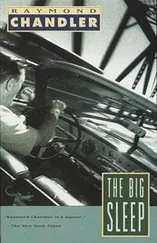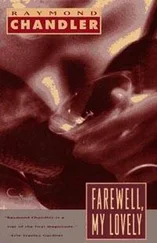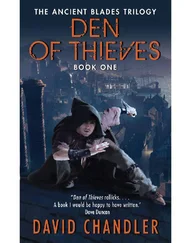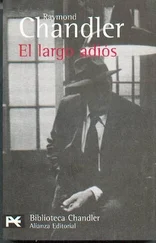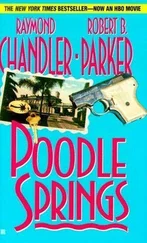One indication that things need not be so, that they might have been otherwise, that they still might be otherwise, can be found in a remarkable encounter in Paris during the same year in which Richards published Practical Criticism . This is the meeting between Sergei Eisenstein and James Joyce, seven years after Joyce published Ulysses (1922) , and four years after Eisenstein made Battleship Potemkin (1925). Far from an occasion for mutual turf defense, the conversation that day, according to both artists, was mutually productive. Eisenstein had acquired Ulysses the year before, when he called it “the Bible of the new cinema”—a cultural role Eisenstein would later, in effect, reassign to Dickens. 44After the meeting with Joyce, he experimented with stream-of-consciousness writing and began to associate Joyce’s formal techniques with his own ambitious project to make a film of Marx’s Capital . 45Joyce, for his part, later wrote to a friend that Eisenstein was one of two directors to whom he could entrust a film version of Ulysses .
It is in the adventurous spirit of this encounter between Joyce and Eisenstein that I choose to discuss how to do criticism in a field with loose but I hope intelligible parameters: defined narrowly enough for intellectual purchase but not in so constrained a way as to exclude areas of intersection. The decision to go this middle route with Aristotle poses both challenges and opportunities: challenges, because studies of film and literature have been too isolated from each other; opportunities, because it offers a chance to make new links while respecting large distinctions. I do not intend to impose connections between the literary and screen arts where they do not exist. Running against the grain of Richards’ influential strictures against cinema, however, there is a counter-tradition dating from Richards’ own time for thinking about the poetics of cinema itself: I have already mentioned the example of Jean Epstein. Conversely, Eisenstein himself famously proposed that his understanding of montage extended not only to dramatists like Shakespeare but even to as relentlessly textual an author as John Milton, whose Puritan commitments would have led him to be wary of theatrical productions. Eisenstein went so far as to call Paradise Lost “a first-rate school in which to study montage and audio visual relationships,” and he illustrated the point with passages he made a point of citing in English on the grounds that the “direct delight in the beauties of composition” would be lost if he were to analyze, say, Pushkin in translation. As a maker of epics himself, Eisenstein is especially interested in the grand-scale effects in Paradise Lost , especially in the passages narrating the war in heaven. He later wrote that, had he read Milton before he made one of his own great epics, Alexander Nevsky (1938), it would have been a different and better motion picture.
T. S. Eliot complained that Milton’s poetry was insufficiently vivid in its visual description, 46but Eisenstein treats it not as describing something but rather as prescribing a set of montage procedures to be, in effect, reenacted by the spectator, who necessarily “experiences the dynamic process of the emergence and assembly of the image just as it was experienced by the author.” 47Eisenstein goes on to illustrate how this process works by staging an analysis of some passages from Milton’s war in heaven (just as he had previously done for a passage from Pushkin) as providing rhythmically sequenced images and (as it were) camera set-ups. Since I began with the theme of tasting forbidden fruit, it might be fitting to examine the famous opening passage of Paradise Lost , in order to see how it might lend itself to Eisenstein’s montage analysis.
The theme of forbidden fruit is not long in making its appearance in this invocation of the epic muse:
Of man’s first disobedience, and the fruit
Of that forbidden tree, whose mortal taste
Brought death into the world, and all our woe,
With loss of Eden, till one greater man
Restore us, and regain the blissful seat,
Sing heavenly Muse, that on the secret top
Of Oreb, or of Sinai, didst inspire
That shepherd, who first taught the chosen seed,
In the beginning how the heavens and earth
Rose out of Chaos: or if Sion hill
Delight thee more, and Siloa’s brook that flowed
Fast by the oracle of God; I thence
Invoke thy aid to my advent’rous song,
That with no middle flight intends to soar
Above the Aonian mount, while it pursues
Things unattempted yet in prose or rhyme.
And chiefly thou O Spirit, that dost prefer
Before all temples the upright heart and pure,
Instruct me, for thou knowst; thou from the first
Wast present, and with mighty wings outspread
Dovelike satst brooding on the vast abyss
And mad’st it pregnant: what in me is dark
Illumine, what is low raise and support:
That to the height of this great argument
I may assert the eternal providence,
And justify the ways of God to men. 48
There are certainly features of this passage that we could follow Eisenstein in calling montage effects. One could point, for example, to the shift from the tight focus on the fruit of the forbidden tree in Paradise to the invocation of the elevated prospect from the peaks of Mount Horeb, where divine inspiration was given to Moses, the presumed author of the book of Genesis on which Paradise Lost is based. There is also a visual repetition (or “match cut”) between this mountain top and that of Sinai, repeated in the invocation of Mount Zion in the clause that begins after the conjunctive “or” in line 10. Eisenstein’s expansive idea of montage might also apply to the “adventurous song” that means to “soar above the Aonian mount,” transcending that pinnacle, as the transcendent divine Spirit broods dove-like above the primordial abyss before the creative imperative “let there be light.” Most striking of all these montage effects, however, might be the juxtaposition of this first light of the world, brought about by the divine Word, and the light that the poet seeks to bring into his dark mind. This latter light, in corresponding to the first one, forms part of Milton’s Puritan belief in the “inner light” available to the “upright heart and pure” of the elect.
As a filmmaker, Eisenstein was famously attentive to the rhythm that governs the succession of images and sounds in cinematic montage, and rhythm is likewise crucial to what Milton has in view when he speaks of his ambition to pursue “Things unattempted yet in prose or rhyme.” After all, Paradise Lost is written in blank verse, a verse form that is not prose (since it involves lines regulated by iambic pentameter, five repetitions of unstressed and stressed syllables) and has no rhyme scheme. Blank verse is a metrical form nonetheless in which the line matters in two important ways: first by an adherence to the iambic pentameter norm, and second by implied principles of construction for what a line can be (since a blank-verse line cannot end or begin just anywhere). In blank verse, importantly, the unit of the line has little to do with the unit of sense, understood as a clause. And yet, although none of the first six lines are end-stopped—none ends with the completion of a sentence or independent clause—all conclude with a noun that completes a noun phrase: “the fruit,” “immortal taste,” “all our woe,” “one greater man,” “the blissful seat,” and “the secret top.” In each case, a strong monosyllabic noun follows an unstressed syllable, thus lending a kind of closing cadence to the line even as we look beyond it for the completion of the clause or sentence. We have to wait until line 7 to find a line that does not end with a noun phrase set to this particular rhythm, and there we are delivered an important single verb—inspire—that provides the same cadence for line closure, in spite of the fact that it is a transitive verb still awaiting its direct object: “That shepherd” (i.e., Moses). The noun phrases then reappear to close lines 8–10.
Читать дальше

